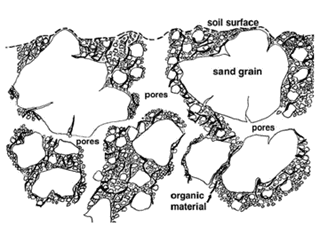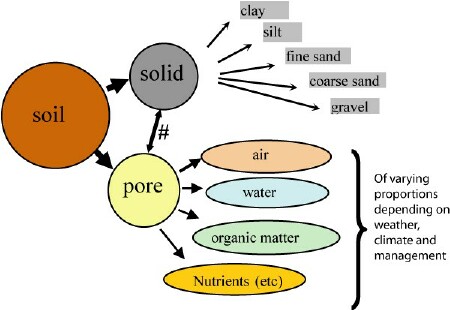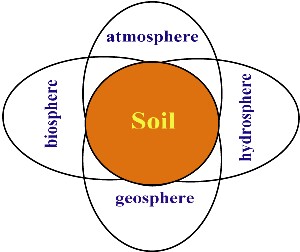Soil Health - Soil
- Soil is more than something to walk on. It is more than an anchor for our plants and buildings.
- It is a vibrant environment, full of life, full of activity. It is a zone of intensive biological activity.
- It is not just worms, ants and plant roots that are housed in soil. Bacteria, fungi, arthropods are there in perfusion. A single spoonful of top soil contains hundreds of millions of tiny organisms.
How is soil built?
Soil starts with the breakdown of rocks or the accumulation of sediments. It continues developing inexorably via physical, chemical, and biological activity. It is slow, taking thousands of years to form and mature.
The silts, sands and gravels of soil are fragments of the original parent material but the rest of the soil is highly modified. Clays are special types of minerals that develop slowly over time. Different clays develop reflecting the parent material, soil age, humidity and temperature. Clay has a strong influence on soil stability, fertility, water holding, drainage and aeration.
Biological activity is stimulated by the growth of plants with their continual supply of organic matter into the soil system. The organic matter not only provides the energy flow into soil, but it is a major contributor to soil productivity and soil stability.
How is soil structured?
Slicing carefully through soil we will find that less that half of its volume is solid. The rest is a complex arrangement of pores and channels. It is these pores and channels, which enable so much activity to occur.
This arrangement can be represented more generically by the following: |  Soil as a porous and permeable environment |
 The composition and arrangement of all soils. | #The proportion of solids to pores depends on the structural arrangement of solids as stabilised by clays and organic materials |
Why is soil valuable? Soil makes the earth habitable. It does this by:
|  Soil is the interface linking the four spheres: atmosphere; hydrosphere; geosphere; and biosphere (Rimmer 1998) |
What are desirable characteristics for a soil?
Soils vary from place to place. They are quite variable in form and in composition so it is not easy to list a set of ideal characteristics.
However it is possible to define some overall requirements as follows:
General
A porous friable soft and stable material which readily accepts stores and transmits water and air to enable biological activity
Biological
Vibrant growth of
- soil fauna (worms, ants, etc) to help break-down coarser organic materials and build and stabilise macropores
- a vast range of micro-organisms to cycle nutrients and energy
- plant roots exploring the soil environment to harvest water and nutrients
Chemical
- Good range of nutrients being contained, recycled and readily available for plant growth
- Neither too acid nor too alkaline
- No excess build up of salts
Physical
- Well distributed size range of particles (i.e. clays, silts, sands and gravels)
- Pore space greater than half of the soil volume with a good distribution of pore sizes. Macropore space is adequate and with interconnection through the profile to encourage the internal drainage and aeration of soil
- Structure is relatively stable and able to support moderate levels of trampling and occasional disturbance without collapse.


